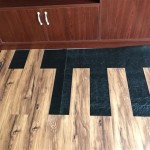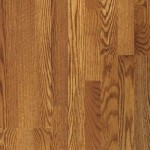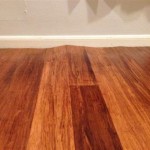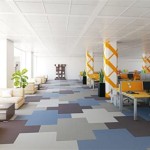Balcony Flooring Waterproofing: A Comprehensive Guide
Balcony waterproofing is a critical aspect of building maintenance and renovation. Water infiltration can lead to significant structural damage, mold growth, and reduced lifespan of the building materials. Selecting the appropriate waterproofing system for balcony flooring is essential to protect the underlying structure and maintain a safe and aesthetically pleasing outdoor space.
This article provides a comprehensive guide to balcony flooring waterproofing, outlining key considerations, different types of waterproofing materials, and best practices for installation and maintenance. The goal is to equip property owners, contractors, and building professionals with the knowledge necessary to make informed decisions about balcony waterproofing projects.
Understanding the Importance of Balcony Waterproofing
Balconies are exposed to the elements, including rain, snow, and sunlight. This constant exposure makes them particularly vulnerable to water damage. Without proper waterproofing, water can penetrate the flooring and seep into the concrete slab or wooden joists below. Over time, this can cause a range of problems, including:
Structural Deterioration: Water damage weakens the concrete or wood, leading to cracks, spalling (concrete flaking), and rot. This compromises the structural integrity of the balcony and, if left unaddressed, can lead to costly repairs or even collapse.
Mold and Mildew Growth: Moisture trapped beneath the flooring provides a breeding ground for mold and mildew. These fungi can cause health problems, including respiratory issues and allergic reactions. Mold can also damage the flooring materials and create an unpleasant odor.
Damage to Interior Spaces: Water that penetrates the balcony flooring can seep into the interior of the building, causing damage to ceilings, walls, and floors. This can lead to costly repairs and disruptions to occupants.
Reduced Property Value: A balcony with visible signs of water damage or structural problems will detract from the overall value of the property. Addressing waterproofing issues promptly can help maintain or even increase the property's value.
Therefore, investing in proper balcony waterproofing is not just a matter of aesthetics; it is a crucial step in protecting the long-term health and value of the building.
Key Considerations for Balcony Waterproofing
Before selecting a waterproofing system and beginning installation, several factors must be considered. These considerations will help ensure that the chosen system is appropriate for the specific balcony and will provide effective, long-lasting protection.
Balcony Usage and Traffic: The amount of foot traffic the balcony receives will influence the type of waterproofing material that is required. High-traffic balconies require more durable and abrasion-resistant waterproofing solutions.
Climate and Weather Conditions: The local climate plays a crucial role in selecting appropriate waterproofing materials. Balconies in areas with heavy rainfall or snowfall require systems that can withstand prolonged exposure to moisture and freeze-thaw cycles.
Existing Balcony Structure: The material and condition of the existing balcony structure will influence the choice of waterproofing system. Concrete balconies require different preparation and waterproofing approaches than wooden balconies.
Budget Considerations: The cost of different waterproofing systems can vary significantly. It is important to establish a budget and select a system that provides adequate protection without exceeding financial constraints.
Aesthetic Preferences: The appearance of the balcony flooring is also a consideration. Some waterproofing systems can be finished with decorative coatings or tiles to enhance the aesthetic appeal.
Drainage: Proper drainage is essential to prevent water from pooling on the balcony surface. The waterproofing system should be designed to direct water away from the building and toward drains.
Building Codes and Regulations: Local building codes and regulations may specify certain requirements for balcony waterproofing. It is important to ensure that the chosen system complies with all applicable regulations.
Types of Balcony Waterproofing Materials
A variety of waterproofing materials are available for balcony flooring, each with its own advantages and disadvantages. Selecting the right material depends on the specific requirements of the balcony and the considerations outlined above.
Liquid Applied Membranes: These are one of the most common types of balcony waterproofing. They consist of liquid polymers that are applied to the balcony surface using a brush, roller, or spray equipment. Liquid applied membranes form a seamless, flexible, and waterproof barrier. Common types include:
Acrylic Membranes: These are water-based membranes that are relatively easy to apply and offer good UV resistance. They are suitable for balconies with light to moderate traffic.
Polyurethane Membranes: These membranes offer excellent durability and flexibility. They are suitable for high-traffic balconies and can withstand harsh weather conditions.
Epoxy Membranes: Epoxy membranes provide exceptional chemical resistance and are ideal for balconies that may be exposed to spills or chemicals.
Cementitious Coatings: These are cement-based coatings that are mixed with water and applied to the balcony surface. Cementitious coatings are typically used as a base layer for other waterproofing systems. They provide a rigid, waterproof barrier but are less flexible than liquid applied membranes.
Sheet Membranes: These are prefabricated sheets of waterproofing material that are adhered to the balcony surface. Sheet membranes offer a consistent thickness and are relatively easy to install. Common types include:
Modified Bitumen Membranes: These are asphalt-based membranes that are reinforced with fiberglass or polyester. Modified bitumen membranes offer excellent waterproofing protection and are suitable for a wide range of applications.
PVC Membranes: These are plastic-based membranes that are highly durable and resistant to chemicals. PVC membranes are often used in commercial and industrial applications.
Tile and Pavers over Waterproofing: This system involves installing a waterproof membrane and then covering it with tiles or pavers. This provides a durable and aesthetically pleasing surface. The waterproofing membrane prevents water from penetrating the underlying structure.
Deck Coatings: Specifically designed for wooden balconies, deck coatings provide a waterproof and protective layer. These coatings often include UV inhibitors to protect the wood from sun damage.
Best Practices for Balcony Waterproofing Installation and Maintenance
Proper installation and maintenance are critical to ensure the long-term effectiveness of any balcony waterproofing system. Following these best practices will help maximize the lifespan of the waterproofing and prevent water damage.
Surface Preparation: Thorough surface preparation is essential for proper adhesion of the waterproofing material. This includes cleaning the surface to remove dirt, debris, and loose materials. Cracks and other imperfections should be repaired before applying the waterproofing. For concrete surfaces, grinding or shot blasting may be necessary to create a suitable profile for adhesion. For wooden surfaces, sanding and priming may be required.
Professional Installation: Hiring a qualified and experienced contractor is highly recommended. Professional installers have the knowledge and expertise to select the appropriate waterproofing system, prepare the surface properly, and apply the material correctly. They can also ensure that the waterproofing system is compatible with the existing balcony structure and that it meets all applicable building codes and regulations.
Proper Drainage: Ensure that the balcony has adequate drainage to prevent water from pooling on the surface. This may involve installing or cleaning existing drains, as well as ensuring that the balcony surface slopes slightly toward the drains. The waterproofing system should be designed to direct water toward the drains and away from the building.
Regular Inspections: Inspect the balcony regularly for signs of water damage, such as cracks, discoloration, or peeling. Address any issues promptly to prevent further damage.
Sealing and Re-Sealing: Many waterproofing systems require periodic sealing or re-sealing to maintain their effectiveness. Follow the manufacturer's recommendations for sealing and re-sealing intervals.
Cleaning and Maintenance: Clean the balcony surface regularly to remove dirt, debris, and algae. Avoid using harsh chemicals or abrasive cleaners that could damage the waterproofing material. Use a mild detergent and a soft brush or mop to clean the surface.
Protecting the Waterproofing Membrane: When using the balcony, avoid dragging heavy objects across the surface or dropping sharp objects that could puncture the waterproofing membrane. Use mats or rugs in high-traffic areas to protect the surface from wear and tear.
Addressing Ponding Water: If water tends to pond on the balcony surface, address the underlying cause. This may involve adjusting the drainage, repairing cracks, or applying a self-leveling compound to create a smoother surface.
By following these best practices, building owners can ensure that their balcony waterproofing system provides effective, long-lasting protection against water damage.
Balcony waterproofing is a proactive measure that safeguards a building's structural integrity and enhances its value. By understanding the options available and adhering to best practices, property owners can make informed decisions, leading to a safe and durable balcony space for years to come.

How To Make Your Balcony Flooring Waterproof

Waterproof Deck Flooring Best Ideas 6 Choices For You

Outdoor Balcony Deck Ultimate T G Watertight Flooring Board

A Complete Guide To Balcony Flooring Design Cafe

How To Waterproof A Balcony Or Terrace Winkler Chimica

Tiling Your Outdoor Balcony Or Deck Remember The Waterproofing Mfm Building S Corp

Waterproof Flooring Ultimate T G Watertight Deck Board

Waterproof Balcony Flooring Options Tufdek Vinyl Decking

Balcony Waterproofing Dryproof Singapore

Plastic Interlocking Deck Tiles 1 Pack Patio 12 X12 Waterproof Outdoor Flooring All Weather Use Floor Decking For Porch Poolside Balcony Backyard Dark Grey Com
Related Posts








